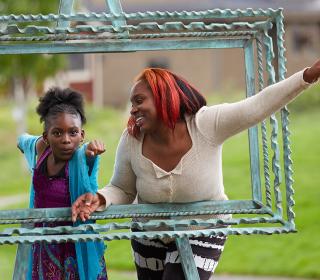Black and white women get breast cancer at the same rate in the U.S. but black women are more likely to die of breast cancer. Black women are 20 to 40 percent more likely to die from breast cancer. Compared with white women, breast cancer incidence rates were higher among black women who are younger than 60 years old but lower among black women who are 60 years old or older. States with higher rates for black than white women are Alabama, Kentucky, Lousiana, Mississippi, Missouri, Oklahoma, and Tennessee. Here are some factors that influence this disparity:

1) Information/Resources
Despite similar breast cancer screening rates, breast cancer is detected at an advanced stage more often in black women than in white women which has largely been attributed to longer intervals between mammograms and lack of timely follow-up of suspicious results. Black women may have inadequate medical care, including limited access to cancer screening technology.

2) Differences in healthcare/Treatment
A study by Cancer Epidemiology, Biomarkers & Prevention, a journal of the American Association for Cancer Research, found that black women between the ages of 20 and 49 were more than three times as likely as white women in this age range to experience treatment delay. Additionally, black women continue to have lower 5-year survival than whites overall. Much of the difference in survival is believed to be due to barriers that limit access to timely, appropriate, and high-quality medical care.

3) Socio-economic
Socio-economic disparities reflect inequitable access to opportunities and resources, such as work, wealth, income, education, housing, and overall standard of living, as well as barriers to high-quality cancer prevention, early detection, and treatment information and services. In contrast, black women have a 6 percent lower risk of a cancer diagnosis than white women, but a 14 percent higher risk of cancer death

4) Racial disparity
The racial disparity has widened for breast cancer in women. Some studies suggest that black women who receive cancer treatment and medical care similar to that of whites experience similar outcomes. However, other studies report that racial disparities persist even after accounting for socio-economic factors and access to care. A higher prevalence of health conditions in addition to cancer among black patients can affect the treatment they receive.
Here are some resources from the National Breast Cancer Foundation, Inc. Please take all the steps you can to get your cancer screening and find the support you need.

Salma Siddick is the Social Media & Content Manager at YWCA Seattle | King | Snohomish. An immigrant from Zimbabwe, Salma has lived, worked, and attended school on three continents.
We share the stories of our program participants, programs, and staff, as well as news about the agency and what’s happening in our King and Snohomish community.

